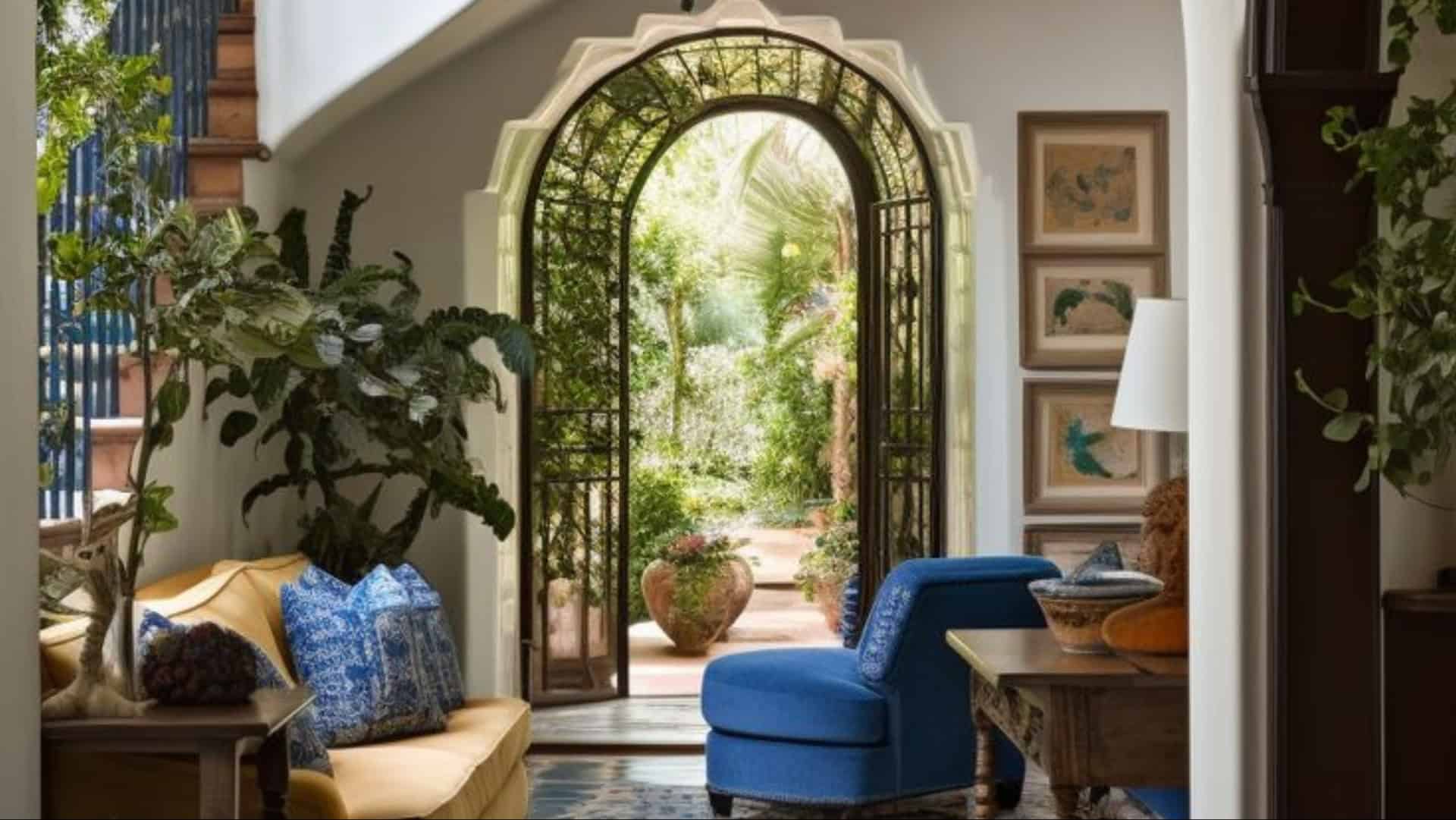Spanish Revival decor captures the vibrancy and warmth of Mediterranean architecture, blending history with modern elegance.
Its essence lies in the use of natural materials, rich colors, and intricate details that evoke a sense of rustic sophistication.
This aesthetic works beautifully in various rooms, from living spaces to outdoor patios, offering a seamless blend of comfort and style.
Whether through ornate tiles, wrought iron accents, or textured walls, Spanish Revival decor invites you to explore a world of timeless beauty and creativity.
1. Wrought Iron Fixtures
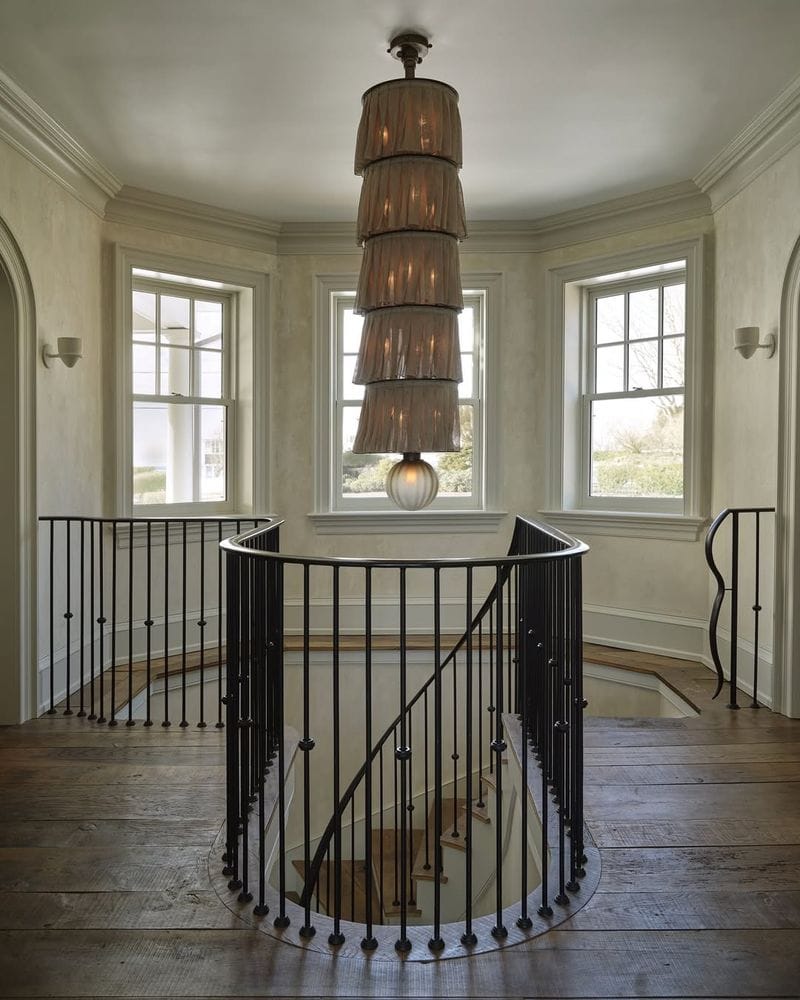
Wrought iron fixtures are a hallmark of Spanish Revival decor, adding an element of rustic elegance.
The intricate designs of chandeliers and wall sconces bring a sense of grandeur to any room. Whether in the living area or dining room, these features complement wooden beams and terracotta floors.
Incorporating wrought iron in furniture or stair railings can enhance the theme.
This metallic touch, with its dark hues, offers a beautiful contrast to bright wall colors, creating a visually appealing space.
2. Terracotta Tiles
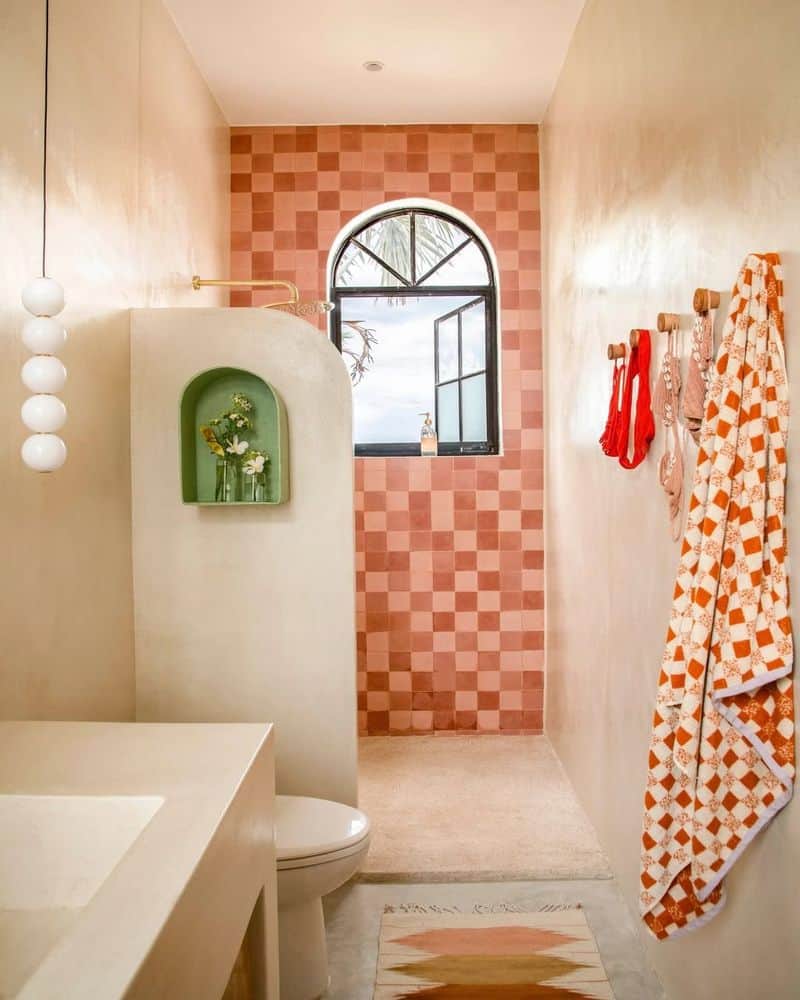
Terracotta tiles are a staple in Spanish Revival homes, known for their earthy tones and natural beauty.
They provide a warm foundation for living spaces and add texture. Ideal for kitchens and outdoor patios, these tiles evoke a Mediterranean ambiance.
Their durability makes them perfect for high-traffic areas. Pairing terracotta tiles with light-colored walls and wooden furniture enhances their charm.
To create a cozy outdoor area, complement them with lush greenery and vibrant textiles.
3. Textured Walls
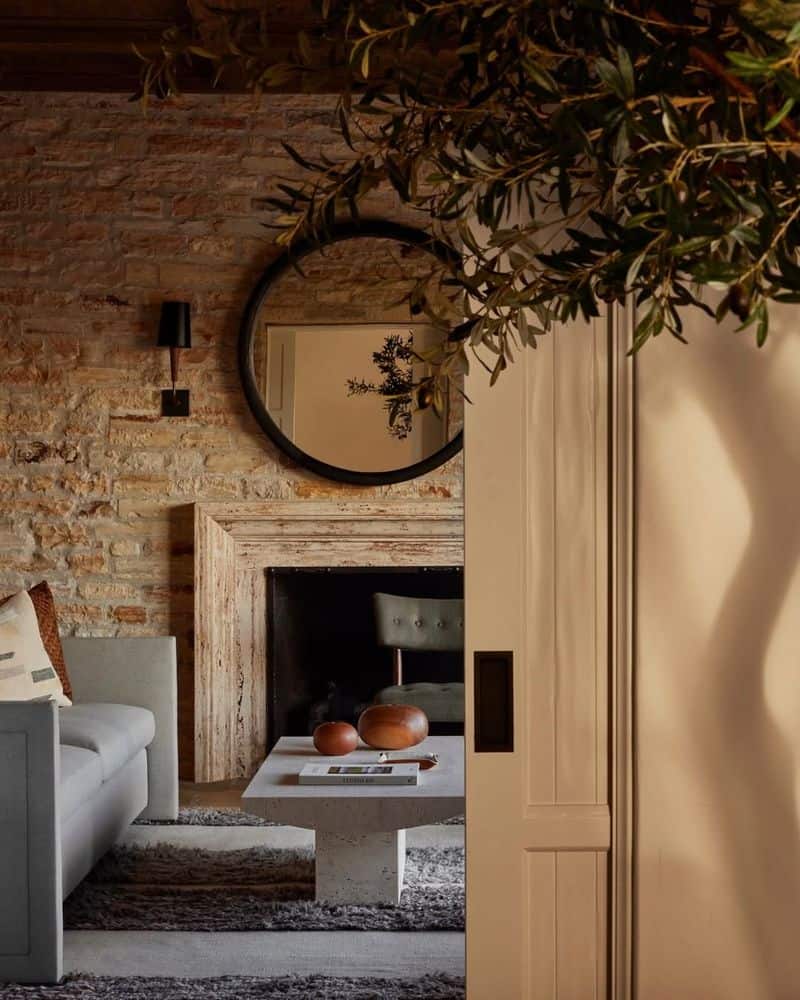
Textured walls, often achieved through stucco or plaster, give a tactile depth to Spanish Revival interiors.
These walls are not just background elements but centerpieces in their own right. Their rough, uneven surfaces catch light differently throughout the day, creating dynamic visual interest.
In dining rooms or entryways, textured walls paired with wooden accents and wrought iron fixtures form a cohesive look.
Adding tapestries or vibrant artwork can further enrich the wall aesthetics.
4. Arched Doorways
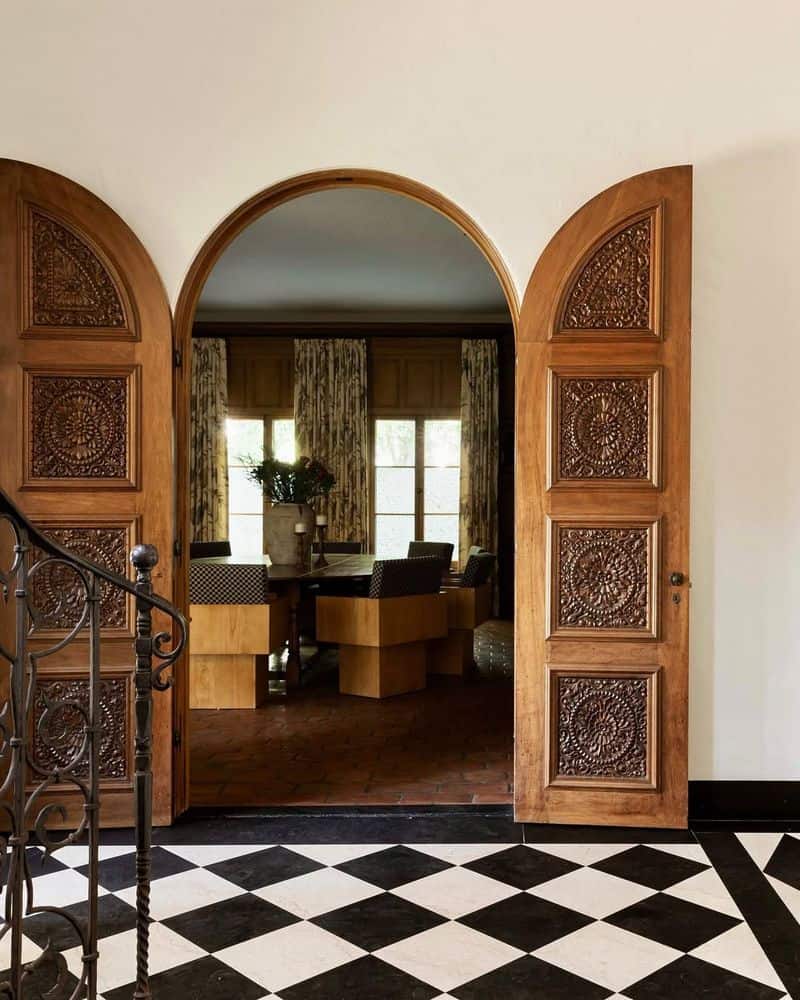
Arched doorways are quintessential in Spanish Revival architecture, offering an inviting flow between spaces.
These structures soften room transitions, adding architectural interest. Paired with carved wooden doors, they exude old-world charm.
Beyond aesthetics, arched doorways enhance natural light distribution, creating a welcoming ambiance.
Whether leading to a garden or another room, they can be adorned with decorative tiles or mosaic patterns.
This timeless design element celebrates history while embracing modern needs.
5. Colorful Tiles
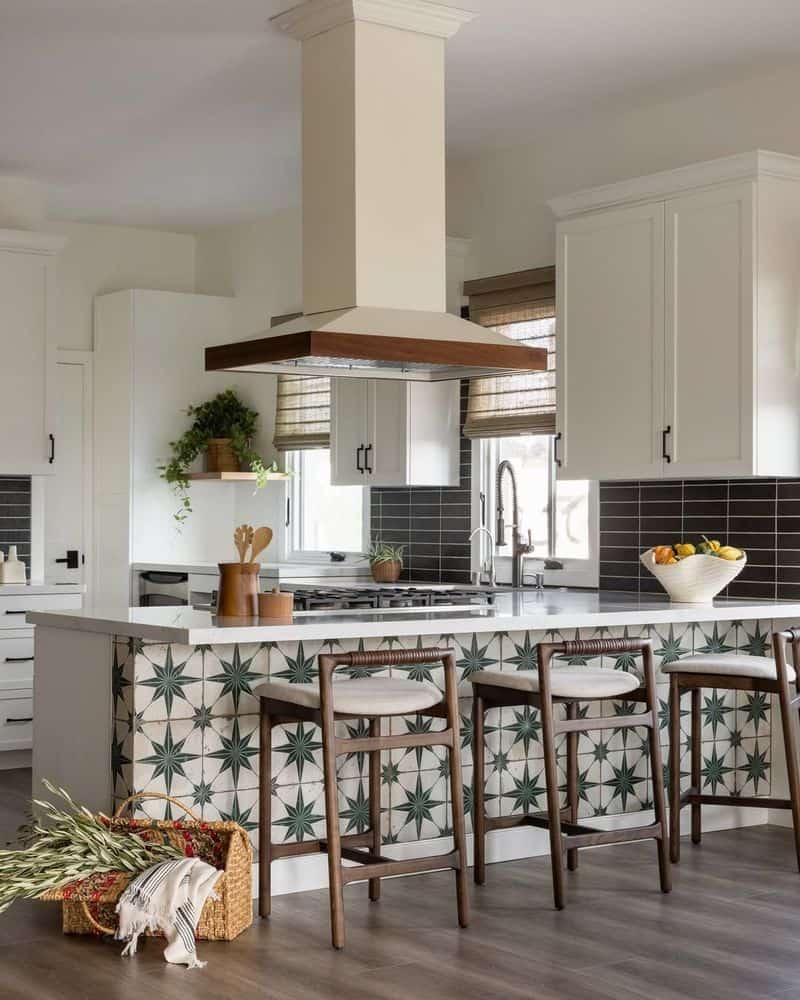
Colorful tiles play a pivotal role in infusing life into Spanish Revival homes. Used in kitchen backsplashes or as decorative accents, they introduce vibrancy and character.
These tiles often feature intricate patterns and rich colors like blues, yellows, and reds. In bathrooms or stair risers, they serve as artistic statements.
Complementing them with neutral tones in furniture or walls allows the tiles to shine.
Their playful yet sophisticated presence captures the essence of Mediterranean artistry.
6. Wooden Beams
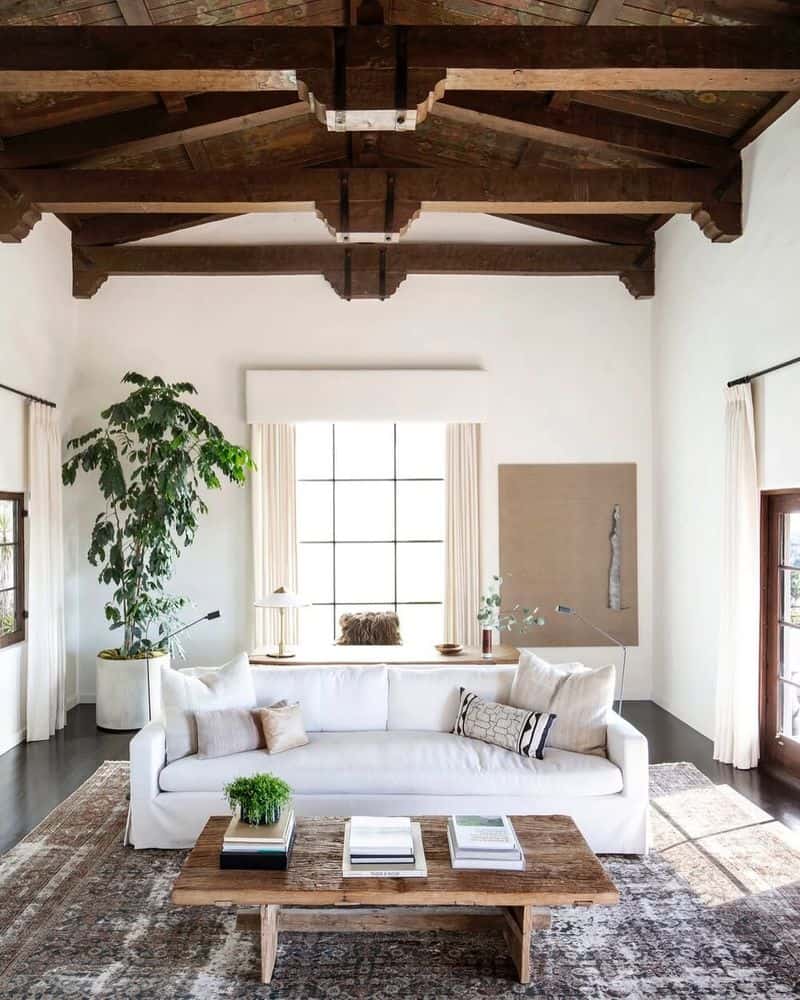
Exposed wooden beams bring warmth and authenticity to Spanish Revival interiors. These architectural elements highlight the craftsmanship and add depth to the ceilings.
In living rooms or kitchens, beams paired with stone fireplaces create a rustic ambiance.
The natural wood tones complement terracotta floors and stucco walls. To enhance the aesthetic, consider adding wrought iron light fixtures.
This combination creates a harmonious blend of textures and materials, inviting comfort and elegance into the home.
7. Ornate Tilework
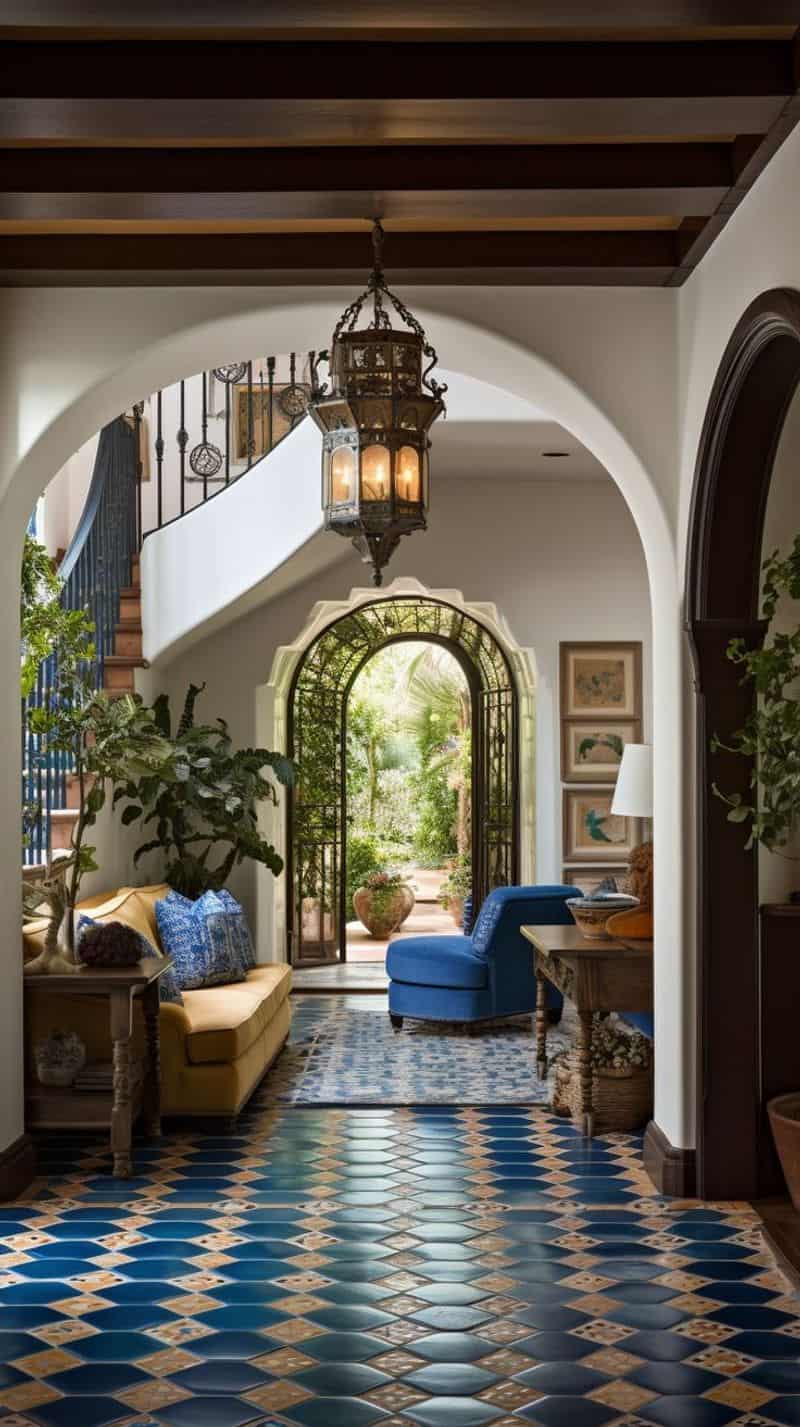
Ornate tilework elevates the visual appeal of Spanish Revival decor, especially in courtyards and entryways.
These tiles often feature complex geometric patterns and vibrant colors, adding a touch of luxury.
They create stunning focal points, drawing the eye and enhancing the architectural beauty.
Complementing tilework with wrought iron furniture or stone elements can complete the look.
This detail-oriented approach showcases artistic expression and offers a unique charm, connecting indoor and outdoor spaces.
8. Rustic Furniture
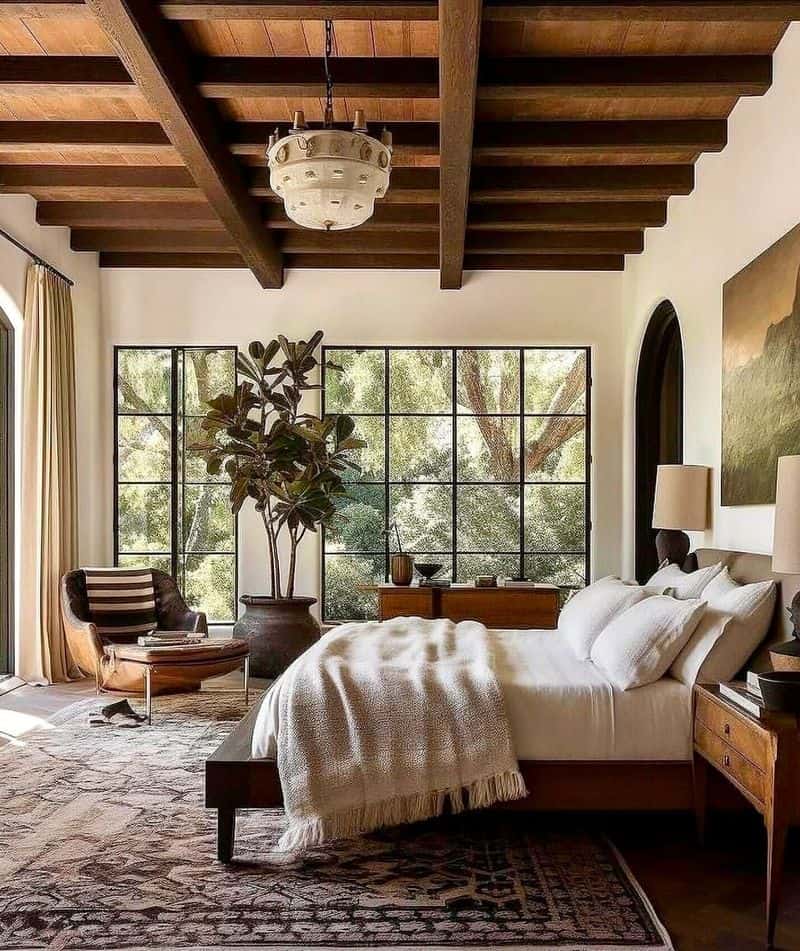
Rustic furniture embodies the soul of Spanish Revival decor, characterized by its robust craftsmanship and natural materials.
Pieces like wooden dining tables or leather-accented chairs bring an earthy elegance to interiors. The rich textures and warm tones of the furniture complement stone or tile floors.
Utilizing wrought iron details in furniture design enhances the overall theme.
This blend of rustic and refined elements creates a welcoming, lived-in feel, perfect for family gatherings and entertaining.
9. Stucco Exteriors

Stucco exteriors are iconic in Spanish Revival architecture, offering a smooth, clean finish. These walls, often painted in warm whites or creams, reflect sunlight beautifully.
Paired with red-tiled roofs and lush landscapes, they create a picturesque facade.
The texture of stucco adds depth and interest, enhancing curb appeal. Incorporating arched windows or wooden shutters can further refine the look.
This exterior style not only withstands the elements but also provides timeless elegance and charm.
10. Decorative Fireplaces
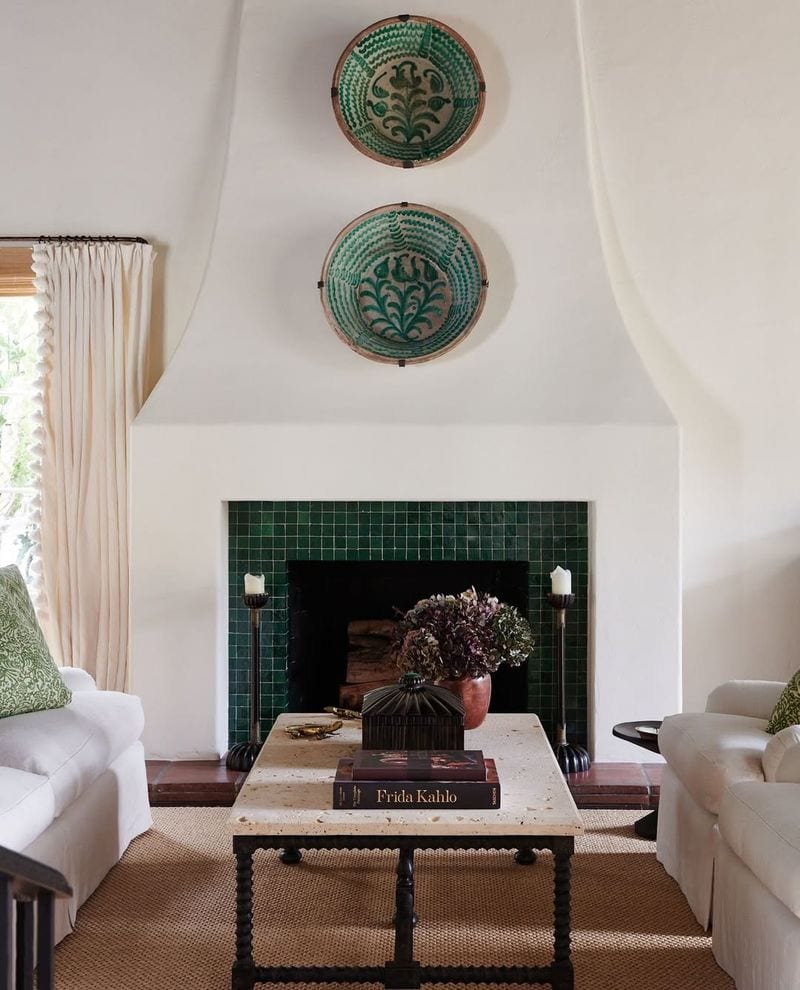
Decorative fireplaces serve as striking focal points in Spanish Revival homes. Adorned with colorful tiles and ornate mantels, they blend functionality with aesthetic appeal.
These fireplaces, often found in living rooms or dens, provide warmth and a cozy atmosphere.
The intricate tile patterns and carved wood details reflect traditional craftsmanship. Surrounding the fireplace with comfortable seating enhances the inviting ambiance.
This feature celebrates the art of gathering, embodying the spirit of Spanish hospitality.
11. Mosaic Accents
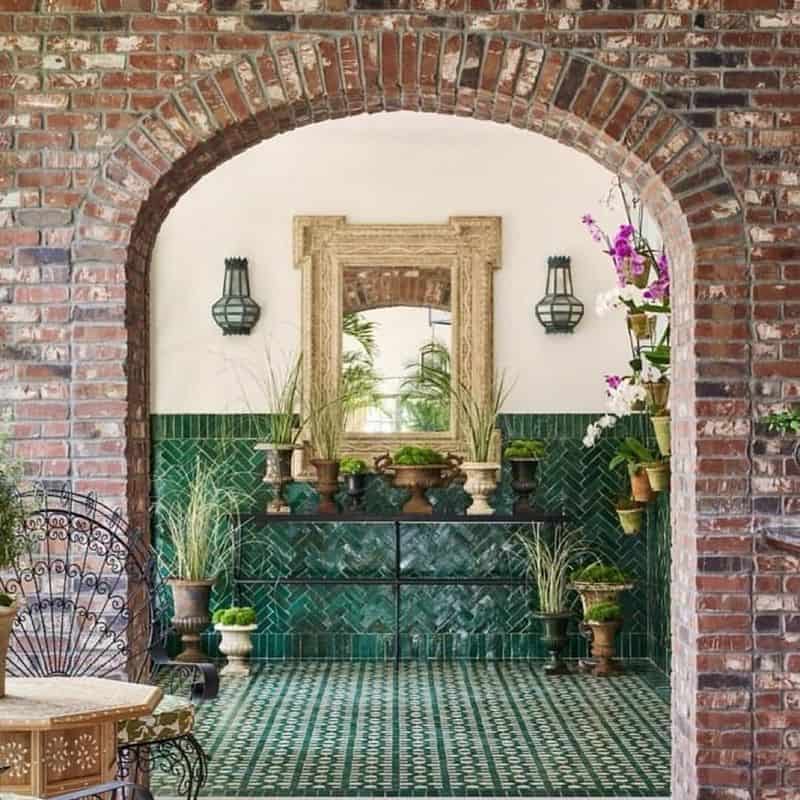
Mosaic accents introduce a layer of artistry and color to Spanish Revival interiors. Used in bathrooms or as decorative elements, they showcase intricate designs and vibrant hues.
These mosaics can transform ordinary spaces into artistic showcases. In entryways or around mirrors, they capture attention and add personality.
Choosing complementary colors in furniture or decor helps balance the visual impact.
This playful yet elegant touch enhances the cultural richness and personalization of the home.
12. Spanish Revival Lighting
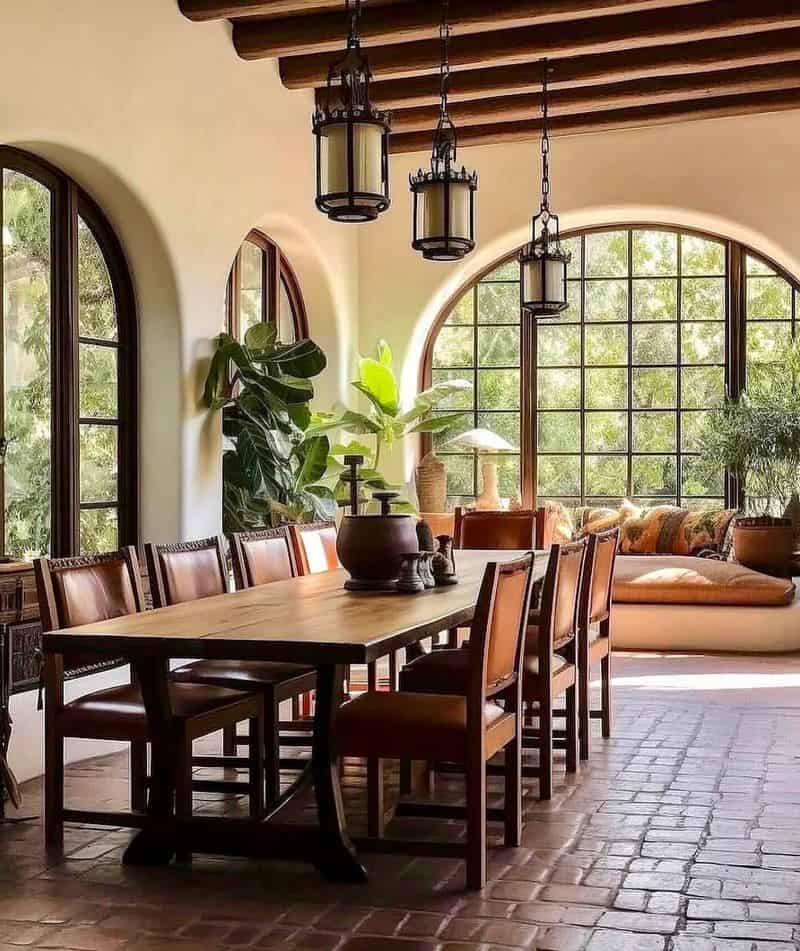
Lighting is a crucial element in achieving the warm and inviting feel of Spanish Revival decor.
Opt for chandeliers and lamps that feature wrought iron and glass elements, reminiscent of historic Spanish designs.
These lighting fixtures not only illuminate your space but also serve as stunning focal points, adding to the overall elegance and charm of your rooms.
Placing them strategically can enhance architectural features like high ceilings and arched windows, creating an atmosphere of old-world sophistication.
13. Lush Courtyards
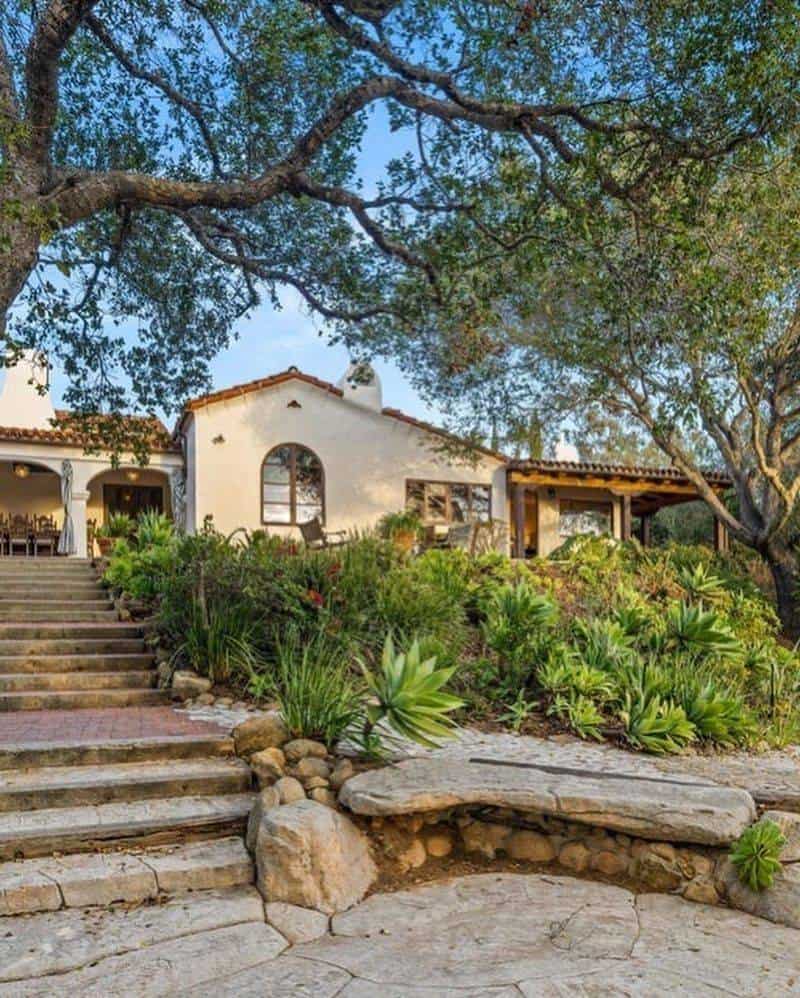
Lush courtyards are a serene escape within Spanish Revival homes, reflecting the outdoor living emphasis.
Centered around water features like fountains, these spaces offer tranquility and beauty. The use of colorful tiles and potted plants enhances the Mediterranean vibe.
Courtyards often serve as extensions of indoor spaces, perfect for relaxation or gatherings.
Incorporating wrought iron furniture and ambient lighting adds to their charm.
These outdoor havens celebrate nature and culture, blending seamlessly with the architectural theme.

